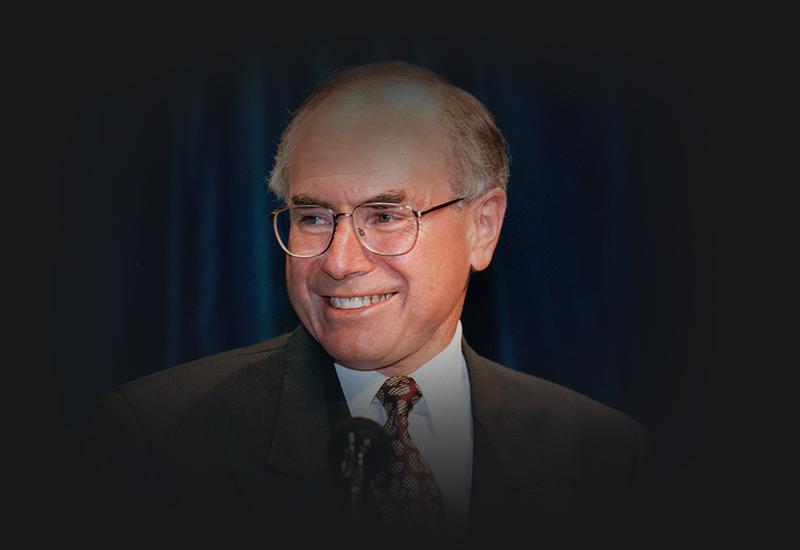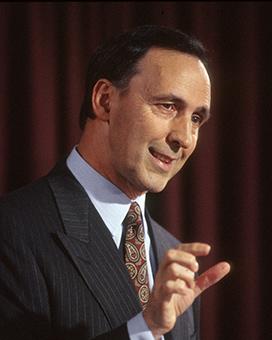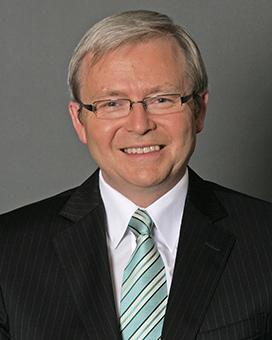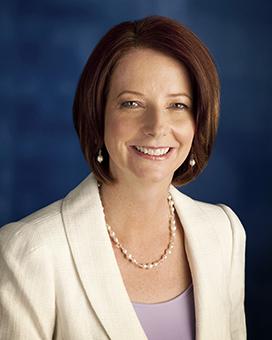John Winston Howard was sworn in as the 25th Prime Minister of Australia on 11 March 1996.
The new Coalition government put into place a program of economic reform, including cost-cutting in the public service and the privatisation of Telstra. Between 1996 and 1999, 49% of Telstra was sold in 2 share offers. Industrial relations restructuring included the replacement of award wages with direct employer–employee enterprise bargaining. Tax reform involved the establishment of a new tax system, with a broad-based consumption tax (goods and services tax) introduced in July 2000.
Key areas in foreign policy included responses to the new war on terrorism, and to stabilise East Timor. The Howard government’s ‘Asia-first, but not Asia only’ diplomacy strategy supported traditional ties with Britain and Europe, the relationships with Commonwealth nations, Australia’s alliance with the United States, and Asia-Pacific trade and diplomatic relations.
One of the first programs introduced by the new government was nationwide gun control, with a federally funded buy-back scheme in response to the mass shooting at Port Arthur in Tasmania, which occurred just 6 weeks after the government took office. It was considered one of the most successful examples of a gun-control scheme.
Privatisation of Telstra
In its first year, the Coalition government began the initial partial sale of the Telstra Corporation, the Australian telecommunications agency. The Telstra (Dilution of Public Ownership) Act 1996 enabled the sale of up to one-third of the agency, with $1 billion of the revenue to be allocated to environmental programs.
The Senate voted 37 to 35 in favour of selling an additional 16.6% of Telstra only 3 years later. The crucial votes were those of the 2 Independents, former Labor Senator for Queensland Mal Colston and Tasmanian Senator Brian Harradine. Harradine negotiated a share of the sale revenue for Tasmania on the basis of the state’s relative economic disadvantage. Telstra was fully privatised with the final sale in 2005.
Industrial relations reform
One of the most widespread of the Coalition government’s reforms was introduced in its first term in office. With a government minority in the Senate, this was achieved by negotiating the enabling legislation through the Senate, securing the agreement of the Australian Democrats, led by Cheryl Kernot. The Workplace Relations Act 1996 and Workplace Relations and Other Legislation Amendment Act 1997 provided the basis for the restructuring of industrial relations. The workplace reforms included the replacement of award wages with direct employer–employee enterprise bargaining. The final element of this reform was the WorkChoices policy introduced on 27 March 2006.
The government also replaced the Commonwealth Employment Service with a privatised and competitive market of employment service providers. A review of the provision of unemployment benefits resulted in widespread changes, including work schemes for the entitlements.
A theme of the government’s social policies was ‘mutual obligation’ – people should be able to rely on community support, but this support should be designed to build individual self-reliance.
Tax reform and the economy
Although a consumption tax had been abandoned after the 1993 election, this reform was a key part of the coalition platform for the 1998 election. Opening the election campaign, Prime Minister John Howard and Treasurer Peter Costello announced ‘the biggest single remake of the Australian taxation system since Federation’. After the government was returned at the election in October 1998, a team of 30 specialists from Treasury, the Australian Tax Office, the Social Security department and the Prime Minister’s department worked to develop the tax package.
A broad-based consumption tax – the goods and services tax (GST) – was introduced in July 2000. Once more, the government had negotiated the enabling legislation through the Senate via the Democrats, this time with leader Meg Lees. The legislation included a provision that any change to the 10% tax rate has to be sought by all state governments and endorsed by the Australian Government, and enabling legislation must be passed by both the House of Representatives and the Senate.
The broad aim of the reform was to address the inadequacy of the income tax base for government revenue. The tax revenue is directed to the state and territory governments, and replaces local indirect taxes, including sales taxes and duties on bank accounts. A reduction in income tax was an integral part of the reform package.
The health of the economy was a priority for the government. Unemployment fell from over 8% in 1996 to 5% in 2005. Inflation was also at a modest level (usually below 3%) and interest rates remained low. In 2004, the Prime Minister put economic and national security at the forefront of his election campaign for a fourth term in office.
International relations and national security
The successful implementation of the government’s industrial relations reform and the introduction of the new tax system were planned initiatives. In contrast, major achievements in international affairs during the Howard government were responses to international and regional crises.
The terrorist attacks on New York and Washington DC on 11 September 2001 and the subsequent war on terrorism had a major impact on Australian international and domestic politics. Australia committed troops to the international coalitions, led by the United States, to undertake military action in Afghanistan and Iraq. The bombing in Bali on 12 October 2002 prompted further measures against the threat of Islamic extremism.
Administrative and legal procedures were set up to deal with issues of national security, including a National Security Committee of Cabinet chaired by the Prime Minister and attended by the Deputy Prime Minister, Treasurer, Minister for Defence, Attorney-General and Minister for Transport and Regional Services.
In Australia’s neighbourhood, the government reacted firmly to the crisis in East Timor after pro-Indonesian groups responded with violence after a plebiscite in 1999 resulted in a massive pro-independence vote. Australia led a United Nations peace enforcement unit in September 1999 to restore order in East Timor. With peace achieved and assistance provided to rebuild infrastructure destroyed by militia groups, parliamentary elections were held in August 2001. Independence leader Xanana Gusmao was elected East Timor’s first President on 14 April 2002.
Howard and Minister for Foreign Affairs Alexander Downer developed an ‘Asia-first, but not Asia only’ diplomacy that involved integrating all the strands of Australia’s 20th-century foreign policy: traditional ties with Britain and Europe, the evolving relationship of the independent nations of the British Commonwealth, defence and trade alliances with the United States, and the post-1950s focus on Australia’s trade and diplomatic relations within its Asia-Pacific neighbourhood.
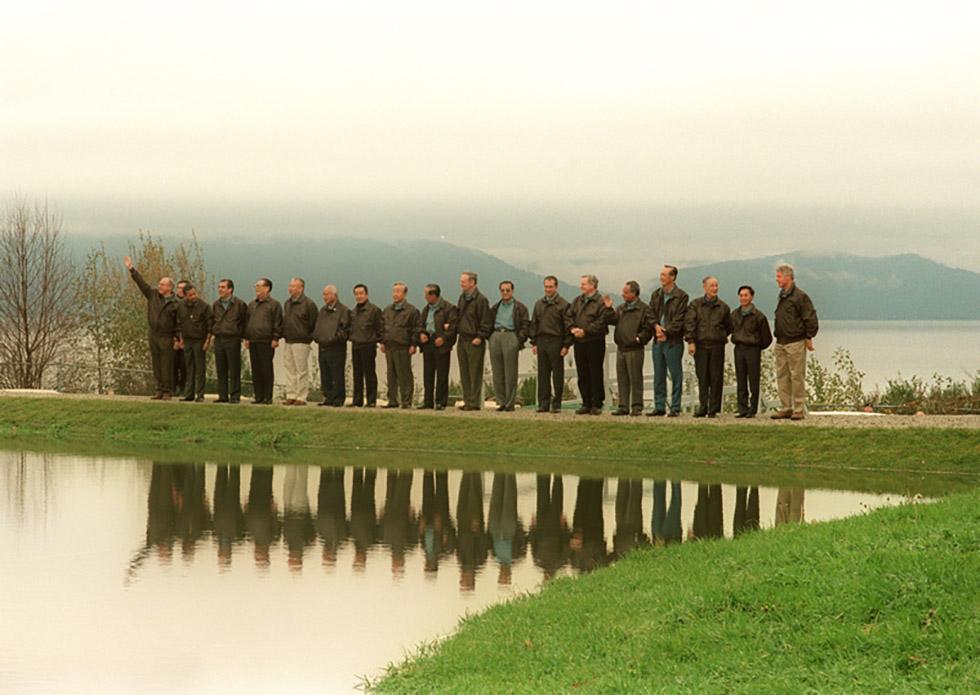
The APEC meeting in Vancouver, Canada, 22 November 1997. Left to right: John Howard (Australia), Sultan Haji Hassanal Bolkiah (Brunei Darussalam), Eduardo Frei Ruiz-Tagle (Chile), Jiang Zemin (China), Tung Chee Hwa (Hong Kong), Suharto (Indonesia), Ryutaro Hashimoto (Japan), Kim Young Sam (Korea), Fidel Ramos (Philippines), Jean Chretien (Canada), Mahathir Mohamad (Malaysia), Ernesto Zedillo (Mexico), Jim Bolger (New Zealand), Bill Skate (Papua New Guinea), Goh Chok Tong (Singapore), Koo Chen-fu (Chinese Taipei), Chuan Leekpai (Thailand) and Bill Clinton (United States). AUSPIC
In March 2002, the Commonwealth Heads of Government Meeting (CHOGM) took place in Australia, and Howard was chairman of the Commonwealth committee set up at CHOGM that suspended Zimbabwe from participation in the Commonwealth later in the year.
Howard attended the inauguration of Indonesian President Susilo Bambang Yudhoyono in October 2004. After the devastation of a tsunami in the Indian Ocean on 26 December 2004, when almost 300,000 lives were lost, his government gave $1 billion in aid to Indonesia.
In 2007, the high-level Asia-Pacific Economic Cooperation (APEC) meeting was held in Sydney.
Sources
- Aulich, Chris and Roger Wettenhall (eds), Howard’s Second and Third Governments: Australian Commonwealth Administration 1998–2004, University of New South Wales Press, Sydney, 2005.
- Barnett, David and Pru Goward, John Howard: Prime Minister, Viking, Melbourne, 1997.
- Errington, Wayne and Peter van Onselen, John Winston Howard: The Biography, Melbourne University Publishing, Carlton, 2007.
- Grattan, Michelle, ‘John Winston Howard’, in Michelle Grattan (ed.), Australian Prime Ministers, New Holland, Sydney, 2000.
- Megalogenis, George, The Longest Decade (2nd edition), Scribe Publications, Melbourne, 2008.
- Singleton, Gwynneth (ed.), The Howard Government, University of New South Wales Press, Sydney, 2005.
- Economic statistics may be found on the website of the Reserve Bank of Australia.

